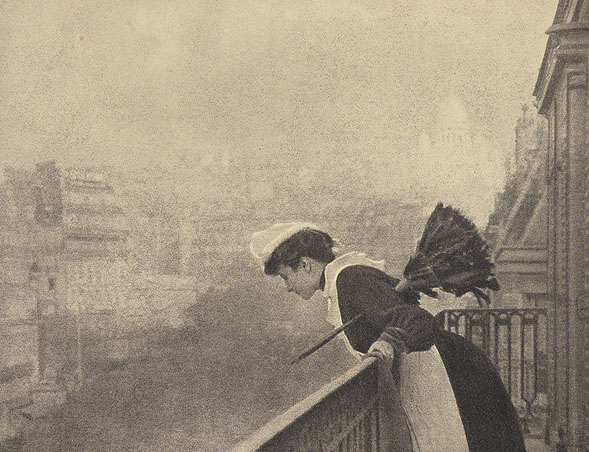
The Cultural Evolution of the Sexy Maid Outfit: From French Fantasy to Global Pop Culture
What Is a Sexy Maid Outfit?
Think of a sexy maid outfit as more than just a costume—it's a cultural artifact, blending history, fantasy, and fashion. Originally modeled on 19th-century domestic uniforms, this modern version is all about sheer fabrics, tight silhouettes, and playful lace. What started as a symbol of service has become a global expression of identity, aesthetics, and even satire.
From Victorian Uniforms to Japanese Reimagination
19th-Century Europe: Where It All Began
The earliest maid outfits were functional uniforms worn by live-in housekeepers in Victorian France. These black-and-white ensembles, complete with aprons and lace trims, represented order, obedience, and cleanliness. There was no overt eroticism—just a clear social code.

20th-Century Japan: Reinventing the Look
Fast forward to late-20th-century Japan, and everything changes. The country's booming ACG scene—anime, comics, and games—breathed new life into the concept.
- The Moe Factor: In the 1980s and 90s, Akihabara’s maid cafés gave uniforms a makeover: shorter skirts, thigh-high socks, and lace accents combined with soft-spoken, "healing" service. This wasn’t just cute—it was emotionally curated.
- Fantasy-Driven Media: Shows like Mahoromatic (1999) cast maid characters not just as caretakers but as protectors, love interests, and even warriors. Suddenly, the maid outfit wasn’t just nostalgic—it was aspirational.
- Going Global: Thanks to cosplay, forums, and digital platforms, the sexy maid outfit found its way to runways, TikTok trends, and even brands like Topology Clothing, whose pieces explore how apparel can express identity and shift perception. If you’re curious about how cultural meaning shows up in everyday design, check out their news blog for more inspiration.
Why Did the Maid Outfit Turn Sexy?
As the maid outfit crossed cultures, it lost its utilitarian function and gained layers of symbolic meaning.
Power & Fantasy
The outfit embodies a social reversal: the wearer plays a “server,” but the visual control belongs to the observer. In stressful societies, this fantasy of being cared for—within boundaries—has comforting appeal.
Innocence Meets Temptation
The sexy maid outfit operates on visual contradiction. White lace suggests purity. Black fishnets? Temptation. This purity-seduction blend aligns with Jungian psychology and is a big part of what keeps the look culturally sticky.
Japan's “absolute territory” design—a sliver of exposed thigh between skirt and stocking—isn’t accidental. It’s engineered to tease, triggering a desire to look closer.
Memory, Safety, and Roleplay
For some, maid outfits tie back to early experiences of care, creating emotional resonance. Others connect it to nostalgia, retro styling, or the fantasy of structured social roles. Either way, the outfit invites playful exploration.
Media Conditioning
The more often we see something, the more normalized it becomes. From Suicide Squad’s Harley Quinn to influencer cosplay, media repetition turns the maid look into a cultural shorthand for sexiness.

The Japanese Explosion: Five Key Waves
- 1990s – Adult Games: Maid characters moved from background roles to fantasy leads in Japanese PC games.
- Late 90s – Cosplay Crossover: Uniforms became icons in themed cafés and anime conventions.
- Early 2000s – Anime Pop: Characters in maid outfits proliferated in non-erotic shows, embedding the visual in fan culture.
- 2005–2007 – Maid Café Boom: In Akihabara, the fantasy went mainstream, offering safe flirtation and curated charm.
- 2007+ – Media Saturation: From fashion to advertising, the aesthetic became a global visual meme.
Anatomy of a Sexy Maid Outfit
- Short, lacy apron
- Tight mini dress or corset top
- White headband or lace choker
- Thigh-highs or fishnets
- Heels or shiny black shoes
- Optional: feather duster, cuffs, or gloves
Gender Play & Modern Appeal
Sexy maid outfits aren’t just for women anymore. Men and non-binary individuals have embraced the look to express humor, rebellion, or camp appeal. Platforms like TikTok and drag shows have given it fresh context.
Psychologically, the maid outfit acts as a gender script—a visual promise to perform a certain role. It reduces social guesswork, creating an immediate frame for interaction.
What Psychology Says
- Symbolic Interactionism: Wearing the costume signifies willingness to play a gender-coded part.
- Sexual Script Theory: Culture teaches us what’s sexy. Media reinforces that “maid = sexy,” until it becomes reflexive.
- Evolutionary Psychology: Some theorize that the “server” role signals youth or availability—but cultural learning matters more.
Critiques and Cultural Tensions
- Objectification: Maid costumes can reinforce outdated gender hierarchies, suggesting women are passive or decorative.
- Subculture vs Mainstream: Otaku circles may see the outfit as innocent play, but advertising often flattens it into a sales tool.
Looking Ahead
Expect more hybrid takes: unisex designs, tech-integrated pieces, and virtual avatars in maid-inspired gear. The costume is no longer just about submission—it’s a mirror reflecting how we play with power, nostalgia, and identity.
